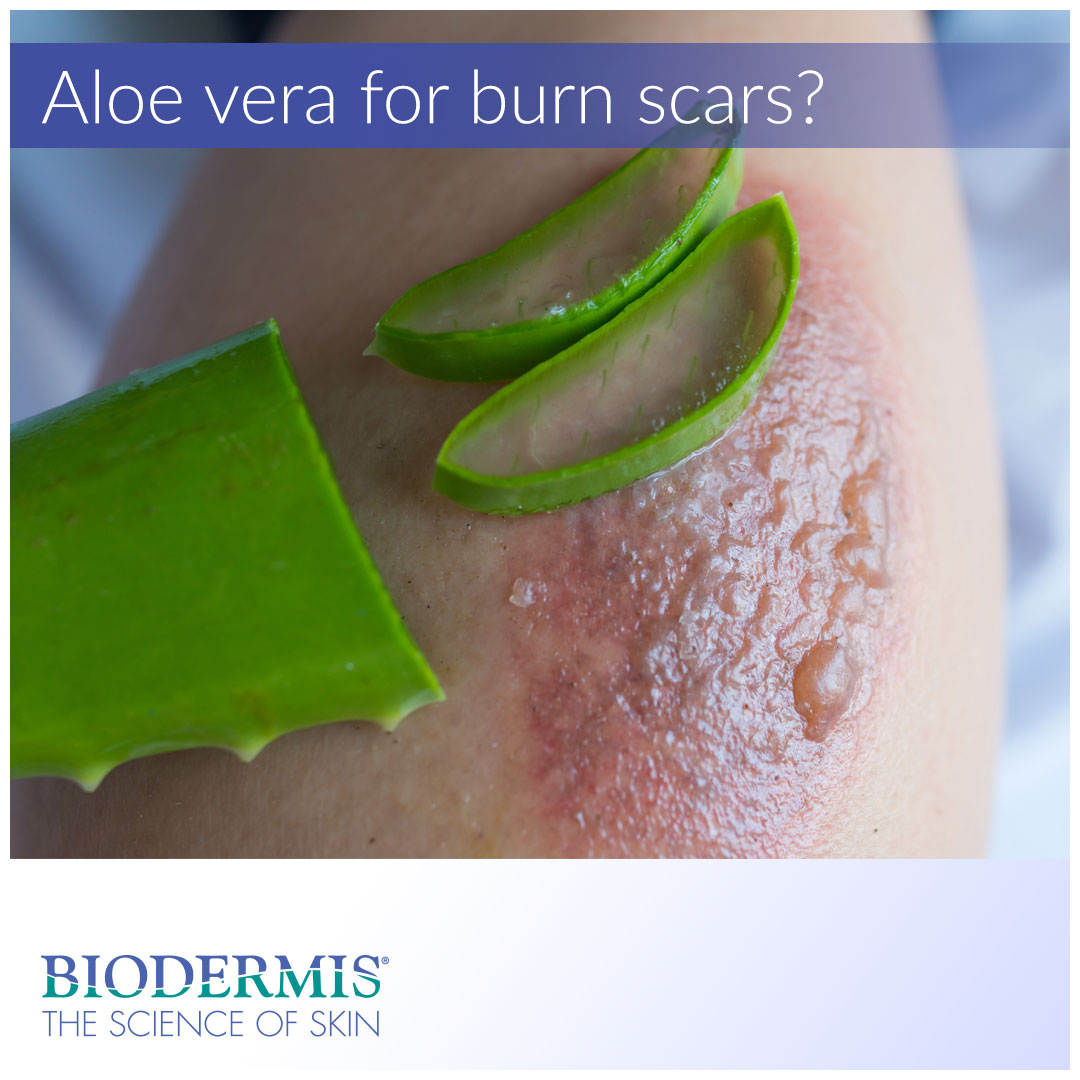Known by the ancient Egyptians as the “Plant of Immortality,” Aloe vera is a species of succulent plant that has been used by people for thousands of years. Aloe vera is acclaimed even today for its medicinal properties that supposedly assist in healing burns, wounds, and scars. But how much do we really know about this natural substance? We know that it has been transformed into a billion dollar industry by the reaffirmation of its many benefits. But we also know that the scientific literature regarding its therapeutic effects is sparse and inconclusive.
In this article we will delve into the Aloe vera industry and find out if it’s really the miracle plant everyone says it is. Specifically, we want to learn more about how Aloe vera treats burns and reduces scars resulting from those burns. Read until the end to discover a clinically proven and effective alternative to burn and scar therapy.

What is aloe vera?
Aloe is a genus of succulent plant that comprises over 500 species of flowering plants. Aloe vera is the most widely-known specie due to its long historical use and media attention. The plant is native to the Arabian Peninsula, but has also been found to grow in many tropical climates around the world.
Aloe vera is prized for the clear, gel-like substance found inside its thick, fleshy leaves. The gel contains a number of biologically-active compounds like vitamins, minerals, enzymes, and fatty acids. Apart from its topical uses, Aloe vera can also be consumed as a nutritious snack.
Listed below are some of the therapeutic compounds found in Aloe vera that are linked to various anti-inflammatory and antibacterial activities in the body.
Vitamins - Aloe vera contains vitamins A, C, and E, which act as antioxidants, preventing free radicals from causing damage to vital molecules in the body.
Enzymes – Aloe vera is also known to reduce inflammation from skin contracture and wound repair due to an enzyme called Bradykinase.
Fatty Acids - Certain fatty acids found in Aloe vera, like campesterol and lupeol, are also linked to anti-inflammatory activities in the body.
Laxatives - Commonly known as laxatives, Aloe vera contains phenolic compounds that give the plant antibacterial properties.
These constituents lead many to believe in the medicinal value of Aloe vera, especially in its ability to treat burns and reduce scars. But it’s not enough to understand the biological role these ingredients play; we want to know how they interact with the human body and facilitate the wound-healing process.
Understanding burn scars
The skin is composed of three layers—the epidermis (top layer), dermis (middle layer), and hypodermis (bottom layer). The type of burn a person sustains is characterized by the damage it causes to these layers.
A person can sustain three degrees of burns—first, second, and third degrees. A first degree burn is least serious, affecting only the epidermis of the skin. First degree burns usually don’t require medical treatment and will heal after only a few days. Second degree burns damage the epidermis and dermis layers, causing redness of the skin, blisters, and inflammation. Third degree burns penetrate all three layers of the skin, causing extreme pain and significantly charring the skin. Fourth, fifth, and sixth degree burns also exist, but they are less-mentioned burn types that are often fatal.
First degree burns usually leave no scarring and tend to heal on their own in a matter of days. Second degree burns may leave a scar that will likely fade over time. Third degree burns will almost always leave a scar, and depending on the severity, may require surgical skin grafting.
It’s difficult to determine the effectiveness of using Aloe vera to treat burns and reduce scars. Online sources cite conflicting evidence. Because Aloe vera is part of huge industry of skin care products, any company that sells it as a cream, lotion, or oil will certainly advocate for its many benefits. Most scientific studies are inconclusive; some reveal Aloe vera as a potential healing agent for burns and various wounds, while others seem to indicate it has no effect in the wound-healing process. No doubt further evidence is needed to form a valid conclusion.
Clinical studies aside, Aloe vera is generally safe to use on the skin. The moisture and cooling sensation of this plant may help ease the pain of a first or second degree burn. However, more serious burns that cause scarring will likely need to be treated in a different way. Luckily, clinically-proven scar care products can be easily purchased online.

A clinically-proven solution for burn scars
Medical-grade silicone for flattening and reducing the appearance of scars was introduced to the market by Biodermis 30 years ago. Silicone gel technology is a clinically-proven and safe topical solution for scars resulting from burns, acne, and surgical procedures. Being a trusted leader in the medical silicone industry, Biodermis has provided top-quality services to surgeons and other skin-care specialists around the world.
To reduce the appearance of larger scars resulting from burns,Epi-Derm Large Sheets in clear or natural colors is the ideal treatment option. Too soothe and reduce smaller burn scars , Xeragel 100% silicone scar ointment is a highly-recommended treatment solution.
Biodermis is an innovative market leader with 30 years of expertise in the medical silicone industry. Visit Biodermis.com today to explore a complete range of scar management and post-operative care solutions.
Biodermis offers custom tailored referral programs designed to simplify and reduce the cost of your patients' post-op care. Additionally, we offer professional pricing if you opt to retail our products. Give us a call at 800.322.3729, and we will be happy to provide additional details on these programs.





